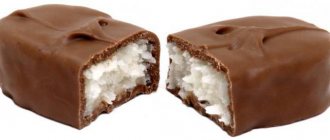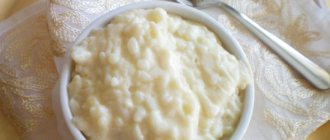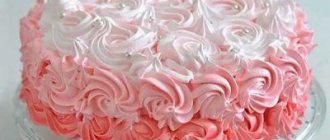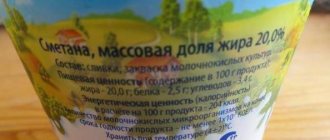A brief excursion into the history of the brand
In the first half of the 20th century, a significant event took place in Germany, namely: the solemn marriage of Clara Goettle and Alfred Ritter. In addition to tender feelings, these two people were united by their work in the sweets industry. Therefore, after a solemn ceremony and a short honeymoon, the couple decides to open their own confectionery factory.
The Ritter family started their business in a small room. The process of producing chocolate and other sweets was carried out manually. The head of the family himself played the role of chocolatier very successfully. It was he who came up with the idea of making chocolate with filling inside. This invention created a real sensation at the time and allowed the family business to expand. As a result, new equipment and vehicles were purchased, and the staff was expanded.
Story
In 1912, confectioner Alfred Eugen Ritter and Clara Göttle, who owned a sweets store, got married. Together they founded the confectionery factory for the production of chocolate and sugar products "Alfred Ritter Cannstatt". The first place where they opened a confectionery factory for the production of chocolate and sugar products was the Innere Moltkestraße street in the city of Bad Cannstatt (now a district of the city of Stuttgart).
Increasing turnover and the need to expand production space necessitated a move to Wilhelmstraße 16 in Bad Cannstatt (now a district of Stuttgart). The Ritter family launched their own brand of chocolate: Alrika.
Clara Ritter's proposal to produce a square chocolate bar quickly found favor in the family circle. She proposed making “a chocolate bar that would fit into the pocket of any sports jacket, without breaking, and with the weight of a regular chocolate bar.” The chocolate square was named "Ritter's Sport Schokolade" ("Ritter's Sport Chocolate"). In addition, the factory produced rectangular tiles, candies, Easter and Christmas products.
1974 - Color packaging appears. Each variety gets its own packaging color. On the advertising poster you can read, among other things, a hint at the then still young color television: “Everything has become more colorful, joyful, more modern, more active - and chocolate along with it.” Another core element of the brand was born.
1976 - knick-pack packaging appeared.
Development of the Ritter Sport brand
After the events described in the previous chapter, Clara Ritter suggested that her husband produce chocolate in an unusual square shape. Moreover, the Ritter family decides to release a whole line of square-shaped products, including candies and other sweets. This idea brought them unprecedented success, and sweets of unusual shape quickly disappeared from the shelves.
Due to further events, production had to be stopped. The fact is that the Second World War began, and the import of cocoa beans was stopped. In the post-war years, the confectionery factory began producing sweets without cocoa beans. It was at that time that the first white chocolate appeared.
In the second half of the 20th century, Alfred Ritter, the founder of the company, passed away, and his son Otto took over management. He decides to direct all production capacity to Ritter Sport square chocolate. As a result, after four years, Otto expanded his staff, and the volume of production reached four tons per day.
The company's management is successfully promoting products in the media, and for the first time, bright designer packaging for each type of chocolate is appearing on sale. On top of that, Otto invented a new format for chocolate packaging that had a seam and made it easy to open a chocolate bar with light pressure on the last one.
Ritter Sport
Ritter Sport
is a chocolate brand owned by the German company Alfred Ritter & Co. GmbH. The chocolate of this brand is of high quality, its range is very diverse. The company's motto is square, practical and good! Chocolate is truly special.
In the company's laboratories, they are constantly inventing something new: bars with nuts, yogurt, fruits, yogurt, peppers, spices, etc.
History of Ritter Sport
Alfred Ritter & Co
was founded in 1912 by German confectioner Alfred Ritter and his wife Clara Ritter, who had their own pastry shop.
The first factory was opened in the suburbs of Stuttgart. It produced not only chocolate, but also other confectionery products.
And it’s worth adding that the chocolate bars are from Alfred Ritter
They weren't square then.
1932 was marked by the invention of the square chocolate bar
and the launch of the well-known brand Ritter Sport. The author of this idea was Clara Ritter.
It was assumed that square tiles would be more convenient and practical for athletes: they could be easily stuffed, for example, into the pocket of a sports jacket (in fact, hence the name Sport).
In addition, the tiles were “designed” in such a way that it was difficult to break them accidentally.
In 1970, the company introduced the world's first chocolate with yogurt
(milk chocolate with smooth
Ritter Sport Joghurt
).
That same year, the company launched its first ever television advertising campaign. The slogan of the advertising campaign was the motto still used today - Quadratisch.
Praktisch. Gut. Mini chocolate bars were released in 1982
(weighing about 16 grams), but, unfortunately, they are not sold in Russia.
1995 was marked by the launch of chocolate bars with yogurt and lemon and with yogurt and orange, and in 1999 a series of chocolate bars for diabetics was released: instead of regular sugar, they use a substitute - malmit. In 2006, large chocolate bars
- weighing 250 grams; In Russia they are sold, but not in all stores. The following year was marked by the transition to using only natural flavors in Ritter Sport chocolate.
And in 2008, bio-chocolate Ritter Sport
, which is made from carefully selected and tested ingredients; Thus, plant ingredients are used (cocoa, nuts, etc.) obtained from plantations on which chemical fertilizers were not used.
Almost all Ritter Sport chocolate is produced in Germany. From 2002 to 2007, it was still produced, for example, at the Odintsovo confectionery factory (under license and under the control of Alfred Ritter & Co.), but in 2007 it was decided to stop producing Ritter Sport in Russia. All chocolate began to be imported from Germany, hence the increase in prices.
Ritter Sport range
Ritter Sport chocolate spectrum
very diverse. But the form of release (packaging) is actually the same - square 100-gram tiles, each consisting of 16 small squares (slices). They also produce very small tiles (16 grams) and very large ones (250 grams), but they are difficult to find in Russian retail.
Ritter Sport chocolate packaging
beautiful and practical. Each type of chocolate has its own packaging color, bright and expressive.
The wrapper also has an interesting property: it can be opened by simultaneously breaking off part of the tile. Additionally, the wrapper is made from recyclable material.
This material is very durable; it does not allow moisture, light, air and foreign odors to pass through.
It’s nice that predominantly natural ingredients are used in the production of Ritter Sport chocolate.
: for example, not “flavor identical to natural vanillin”, but natural vanilla. Ritter Sport is also distinguished by a fairly high cocoa content, and of high quality.
Cocoa (in most varieties, but not all) is not “diluted” with soy lecithin, vegetable and palm fats/oils, which less conscientious producers love so much. The company very carefully monitors the quality of purchased cocoa.
Most of the cocoa beans are purchased from trusted producers in Cote d'Ivoire, Ecuador, Papua New Guinea, and Nicaragua.
The corresponding varieties of Ritter Sport chocolate actually contain yogurt, although it has previously been condensed (“dried”). Strawberries and other similar berries are natural. In other words, Ritter Sport's quality standards are truly impressive.
Source: //tudatuda.com/ideas-for-applications/goods/ritter-sport-.htm
The Ritter Sport brand is currently
At the end of the last century, the company producing the famous chocolate documented its high quality in the German Institute and in an international organization. The quality of Ritter Sport chocolate is also confirmed by reviews from numerous consumers of the product.
increase the share of exports of finished products, they appear in retail outlets around the world. Currently, the confectionery factory owns its own chocolate tree plantations.
The company is actively promoting its products, namely: organizing master classes, opening museums and workshops where everyone can learn more about the history of chocolate and feel like a famous chocolatier, making their own unique delicacies.
Types of Ritter Sport chocolate
Currently, there are more than fifty different types of the famous brand of chocolate. No other chocolate company has such a rich line of varieties. The product range includes bitter, milk and even semi-bitter chocolate with an unimaginable variety of fillings and additives. In our country, not the entire range of flavors is available for open sale. The most famous types of chocolate are:
- strawberries with yogurt;
- raspberries with cranberries in yogurt;
- bitter with elite cocoa from Ecuador;
- milk with rum, raisins and nuts;
- dark chocolate with whole hazelnuts;
- milk chocolate with macadamia nuts;
- white chocolate with whole hazelnuts and flakes;
- milk chocolate with whole almonds;
- milk chocolate filled with coconut pulp and many others.
One of the most popular varieties of the famous delicacy is Ritter Sport milk chocolate with hazelnuts. Reviews of Ritter Sport chocolate with nuts contain information about a large number of whole nuts and the soft taste of milk chocolate.
Assortment video review
The flavor spectrum of Ritter Sport chocolate now includes 55 types of chocolate. Moreover, each type is wrapped in its own unique multi-colored packaging.
The calorie content of chocolate is about 450-500 kcal per 100 g of product, depending on. What fillers are present in it? But the company cares about all those who have a sweet tooth, so it produces 4 types of chocolate designed exclusively for diabetics with maltitol instead of sugar.
The most popular varieties are:
- "Cappuccino and Espresso";
- "Alpine milk";
- with almonds;
- with hazelnuts;
- with almonds and caramel;
- yogurt with strawberries;
- "Cocoa cream";
- with marzipan and cookies;
- "Yogurt";
- dark chocolate with nuts;
- coconut cake.
- "Dark praline";
- "Elite cocoa of Ecuador";
- with coconut;
- coconut cake;
- berries with raspberries and yogurt;
- Neapolitan waffle;
- "Nougat";
- Mint or nut liqueur;
- "Olympia";
- with whole hazelnuts;
- "Chocolate Duet";
- "White Crispy";
- white chocolate with nuts;
- with crushed peanuts;
- yogurt with lemon;
- yogurt with strawberries;
- yogurt combined with raspberries and cranberries;
- caramel with almonds;
- raisins with rum and nuts;
- "Glasse";
- dark chocolate with mint filling.
RITTER SPORT official website: www.ritter-sport.de/ru/
German chocolate “Ritter Sport” is a temptation even for the most fastidious gourmet. Unfortunately, German products are quite rare in our stores. As for chocolate, if they have Ritter Sport bars, there are no more than 5-7 varieties. Unfortunately, it is not possible to observe the full spectrum. But I assure you, if you try this chocolate once, you will return to the store for it more than once.
Slogan: Quadratisch. Praktisch. Gut! (English - The handy chocolate square; Russian - Kvadratish. Practical. Gut.)
The world famous German brand of chocolate, produced by the confectionery factory Alfred Ritter GmbH & Co. KG
, founded in 1912 by spouses Alfred and Clara Ritter.
The appearance of these chocolates is recognizable and memorable. First of all, what catches your eye is the unusual square shape of the bar, weighing 100 grams (there are also 250 gram bars and gift sets with small chocolate samples), which are divided into 16 slices and packaged in plastic packaging. Depending on the variety (and there are many of them) and the filling, the color of the packaging changes. Ritter Sport Schokolade
its history back to 1932.
Our consumers often try to translate the name “Ritter Sport”, usually believing that the first word in the name translates as “knight”
or
"rider"
. But, as we see, the name of this chocolate has nothing to do with the troops, even though it is German. As for sports, there is a direct connection with the square shape - the official legend says that the chocolate and sports lover Clara rightly decided that this particular shape would allow the chocolate bar not to break in the tight pocket of her sports uniform.
For a long time, the square chocolate bar was just one item in the company’s wide range of products. But everything changed dramatically in 1952, when the board completely passed to the son of the founders, Otto Ritter. He took a risky step - he decided to reduce production and focus only on the production of Ritter Sport chocolate. Naturally, the production of other products was not stopped overnight. This happened gradually, over almost a decade. But by the beginning of the 60s of the last century, the factory completely switched to square chocolate bars, the final style of which was formed in 1974. The final touch was to equip each variety with its own personal color. By resorting to the services of official sources, we can find out that in those years color televisions began to become widespread and it would have been a sin not to take advantage of this.
Today chocolate is sold in almost a hundred countries around the world. The main production is concentrated in Germany. However, for some time they were engaged in it on the territory of Russia, in Odintsovo. However, in 2008, the Germans abandoned this practice, citing the official reason for the difficulty of obtaining truly high-quality ingredients in Russia. However, it seems more plausible that the American company Wm had a hand in this. Wrigley Jr. Company
, which bought out the chocolate company
, which also owned the factory in Odintsovo.
Chocolate raisin cupcakes
12.07.2020
How to make birds from dough recipe
12.07.2020
Canned pink salmon salad: recipes Pink salmon salad without rice
12.07.2020
Composition of chocolate bars
The composition of popular chocolate includes: sugar, cocoa butter and cocoa mass, whole milk powder, skimmed milk powder and milk fat, lactose, emulsifiers and natural flavors. For yogurt-based fillings, ingredients such as vegetable oil, sugar, glucose, skim yogurt powder, cream powder, emulsifiers, natural flavors and an acidity regulator are used. Chocolate also contains various fruits, berries, nuts and coconut pulp. For piquancy, manufacturers add all kinds of spices to chocolate bars, among which the most popular are vanilla, cloves, cardamom, paprika and ginger. It is worth special note that in order to increase the shelf life of the finished product, manufacturers decided to add exclusively dried fruits and berries to chocolate.
Numerous consumer reviews about the composition of Ritter Sport chocolate completely coincide with the information indicated by the manufacturer on the product label, namely: the delicacy contains only natural ingredients without traces of dyes and flavors.
Chocolate
Ritter Sport chocolate, reviews of which are replete with references to consistent quality, product variety, affordable price and delicious taste characteristics, has a rich history. The recipe for its production is still kept in the strictest confidence by the manufacturers. Read about the composition of the famous chocolate, its taste and nutritional value in this article.
A brief excursion into the history of the brand
In the first half of the 20th century, a significant event took place in Germany, namely: the solemn marriage of Clara Goettle and Alfred Ritter. In addition to tender feelings, these two people were united by their work in the sweets industry. Therefore, after a solemn ceremony and a short honeymoon, the couple decides to open their own confectionery factory.
The Ritter family started their business in a small room. The process of producing chocolate and other sweets was carried out manually. The head of the family himself played the role of chocolatier very successfully.
It was he who came up with the idea of making chocolate with filling inside. This invention created a real sensation at the time and allowed the family business to expand.
As a result, new equipment and vehicles were purchased, and the staff was expanded.
After the events described in the previous chapter, Clara Ritter suggested that her husband produce chocolate in an unusual square shape. Moreover, the Ritter family decides to release a whole line of square-shaped products, including candies and other sweets. This idea brought them unprecedented success, and sweets of unusual shape quickly disappeared from the shelves.
Due to further events, production had to be stopped. The fact is that the Second World War began, and the import of cocoa beans was stopped. In the post-war years, the confectionery factory began producing sweets without cocoa beans. It was at that time that the first white chocolate appeared.
In the second half of the 20th century, Alfred Ritter, the founder of the company, passed away, and his son Otto took over management. He decides to direct all production capacity to Ritter Sport square chocolate. As a result, after four years, Otto expanded his staff, and the volume of production reached four tons per day.
The company's management is successfully promoting products in the media, and for the first time, bright designer packaging for each type of chocolate is appearing on sale. On top of that, Otto invented a new format for chocolate packaging that had a seam and made it easy to open a chocolate bar with light pressure on the last one.
After the death of Otto Ritter, the next generation of the family, Marley and Theodor Ritter, began to manage the company. It was they who came up with the idea of using wrapping packaging made from an environmentally friendly material called polypropylene. Its advantage is that it is easily recyclable.
The Ritter Sport brand is currently
At the end of the last century, the company producing the famous chocolate documented its high quality in the German Institute and in an international organization. The quality of Ritter Sport chocolate is also confirmed by reviews from numerous consumers of the product.
Manufacturers of the Ritter Sport brand are increasing the share of exports of finished products; they appear in retail outlets around the world. Currently, the confectionery factory owns its own chocolate tree plantations.
The company is actively promoting its products, namely: organizing master classes, opening museums and workshops where everyone can learn more about the history of chocolate and feel like a famous chocolatier, making their own unique delicacies.
Types of chocolate “Ritter Sport”
Currently, there are more than fifty different types of the famous brand of chocolate. No other chocolate company has such a rich line of varieties.
The product range includes bitter, milk and even semi-bitter chocolate with an unimaginable variety of fillings and additives. In our country, not the entire range of flavors is available for open sale.
The most famous types of chocolate are:
- strawberries with yogurt;
- raspberries with cranberries in yogurt;
- bitter with elite cocoa from Ecuador;
- milk with rum, raisins and nuts;
- dark chocolate with whole hazelnuts;
- milk chocolate with macadamia nuts;
- white chocolate with whole hazelnuts and flakes;
- milk chocolate with whole almonds;
- milk chocolate filled with coconut pulp and many others.
One of the most popular varieties of the famous delicacy is Ritter Sport milk chocolate with hazelnuts. Reviews of Ritter Sport chocolate with nuts contain information about a large number of whole nuts and the soft taste of milk chocolate.
Composition of chocolate bars
The composition of popular chocolate includes: sugar, cocoa butter and cocoa mass, whole milk powder, skimmed milk powder and milk fat, lactose, emulsifiers and natural flavors.
For yogurt-based fillings, ingredients such as vegetable oil, sugar, glucose, skim yogurt powder, cream powder, emulsifiers, natural flavors and an acidity regulator are used.
Chocolate also contains various fruits, berries, nuts and coconut pulp. For piquancy, manufacturers add all kinds of spices to chocolate bars, among which the most popular are vanilla, cloves, cardamom, paprika and ginger.
It is worth special note that in order to increase the shelf life of the finished product, manufacturers decided to add exclusively dried fruits and berries to chocolate.
Numerous consumer reviews about the composition of Ritter Sport chocolate completely coincide with the information indicated by the manufacturer on the product label, namely: the delicacy contains only natural ingredients without traces of dyes and flavors.
Calorie content and nutritional value of popular chocolate
The energy value is calculated per hundred grams of the finished product and in this case ranges from 497 to 603 kilocalories. The nutritional value of the product is calculated accordingly and is: for proteins - from 5 to 10 grams, for fats - from 28 to 49 grams and for carbohydrates - 25 to 55 grams.
Numerous consumer reviews of Ritter Sport dark chocolate indicate its low calorie content, so if you are watching your figure, then this product is intended for you.
The product must be stored in accordance with the information indicated on the product packaging. In most cases - from 10 to 12 months at room temperature.
Chocolate “Ritter Sport”: reviews
Nowadays, when everyone plays sports and is passionate about proper nutrition, dark chocolate has become popular. Judging by consumer reviews, Ritter Sport Gorky Elite chocolate is ideal for this purpose. It has a pleasant taste, low calorie content and consists only of natural ingredients.
On the eve of the New Year holidays, chocolate bars with spices are extremely popular. For example, milk chocolate “Ritter Sport Ginger Cookies”, reviews of which say that the soft taste and delicious aroma of this delicacy are associated with a warm holiday atmosphere in the home circle.
Source: //FB.ru/article/447610/shokolad-ritter-sport-otzyivyi-sostav-vkusovyie-kachestva-pischevaya-tsennost
Calorie content and nutritional value of popular chocolate
The energy value is calculated per hundred grams of the finished product and in this case ranges from 497 to 603 kilocalories. The nutritional value of the product is calculated accordingly and is: for proteins - from 5 to 10 grams, for fats - from 28 to 49 grams and for carbohydrates - 25 to 55 grams.
Numerous consumer reviews of Ritter Sport dark chocolate indicate its low calorie content, so if you are watching your figure, then this product is intended for you.
The product must be stored in accordance with the information indicated on the product packaging. In most cases - from 10 to 12 months at room temperature.
Chocolate "Ritter Sport": reviews
Nowadays, when everyone plays sports and is passionate about proper nutrition, dark chocolate has become popular. Judging by consumer reviews, Ritter Sport Gorky Elite chocolate is ideal for this purpose. It has a pleasant taste, low calorie content and consists only of natural ingredients.
On the eve of the New Year holidays, chocolate bars with spices are extremely popular. For example, milk chocolate “Ritter Sport Ginger Cookies”, reviews of which say that the soft taste and delicious aroma of this delicacy are associated with a warm holiday atmosphere in the home circle.
Quality above all
Ritter Sport is a brand, and its founders control the quality and reputation. For many decades. The most important condition is the use of exclusively natural ingredients, a taboo on dyes or flavored additives.
Allowed fillers in chocolate:
- various fruits,
- berries;
- nuts, both whole and crushed,
- all kinds of cream fillings;
- components beneficial to the body, such as purine, flavonoids, serotonin, cadmium, calcium, iron, sodium, copper, potassium, sodium
The following ingredients are put into production:
- cocoa beans;
- milk;
- sugar;
- natural oils and fats.
Another important ingredient is spices and spices from all over the world, which give chocolate its piquancy. And all because spices include aromatic components, which, when mixed with chocolate, give it a new taste and aroma. Most often added in production:
- cardamom;
- ginger;
- cinnamon;
- saffron;
- cloves;
- basil greens;
- paprika;
- vanilla.
The most popular are delicacies with fruit fillings. This is explained by its pronounced aroma and taste. As a rule, dried fruits are used (using different drying technologies), thanks to which the delicacy can last much longer than with fresh ones. Raisins are placed whole, and strawberries are cut into small pieces or in the form of berry powder.








